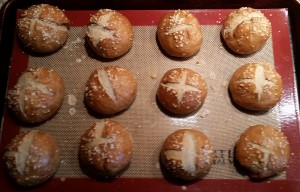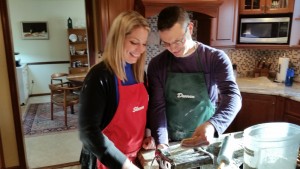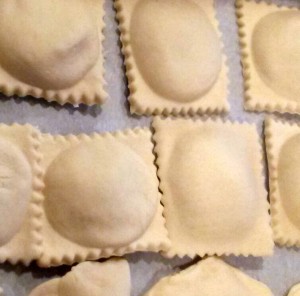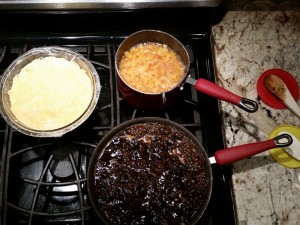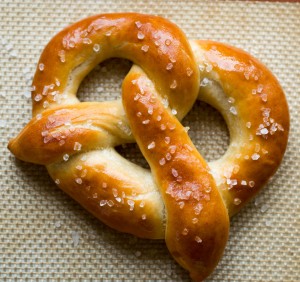The HomeOwner Family took a Caribbean cruise a few years ago that left from New York. The reasoning was that we would save the airfare and start relaxing right away. What we hadn’t planned on was an Atlantic hurricane which we managed to skirt around, but the seas were pretty rough. It was so rough, in fact, that the crew of the ship had been thoughtful enough to put little water-proofed bags on every flat surface of the ship and most of the passengers were availing themselves of them. HomeOwnerMan was o.k. having hardened his innards on the decks of the CasBar I and the CasBar II for many years. WifeGirl and SonBoy, however, were looking pretty green around the gills and couldn’t eat. We had chosen “FreeStyle Cruising” because it was our intent to eat our way from 1 aft to 10 forward, but mother nature had different plans.


Anyway, the weather started to break and WifeGirl and SonBoy had not had anything to eat in about 24 hours. On the buffet we came across pretzel rolls. They were pleasing to the eye, and seemed like something that might go down easily. They were right; these things were fabulous. We had to make them when we got home.
We started looking for recipes and testing them from that day on. Here’s the best one we’ve found, with credits at the bottom and my notes.
I will say this requires a fair amount of time and effort. If you are new to baking bread, don’t start with these. But if you’ve kneaded a loaf or two in your day, give them a try.
Pretzel Rolls
Ingredients
1 tablespoon instant yeast
2 tablespoons canola or vegetable oil
2 cups warm milk (about 100-110 degrees F)
1 1/2 cups warm water (about 100-110 degrees F)
2 teaspoons salt
6 1/2 – 8 cups unbleached all-purpose flour
3 quarts water
[1 tablespoon sugar
1/4 cup baking soda]
Baker’s lye – 2 teaspoons per quart of water for blanching
Coarse salt for sprinkling
Directions
1. In the bowl of an electric mixer (or you can do this by hand in a large bowl), stir together the yeast, oil, milk and water. Add the salt and two cups of the flour. Add the rest of the flour gradually until a soft dough is formed and knead for 3-4 minutes. You may not need to use all the flour depending on many different factors (see the note) – add the flour until a soft dough is formed that clears the sides of the bowl. It is similar in texture to bagel dough and should be slightly more stiff and less sticky than, say, roll dough, but definitely still soft and not over-floured.
2. Transfer the dough to a lightly greased bowl, cover it with greased plastic wrap and let it rise until doubled in size (1-2 hours).
3. Portion the dough into 16 pieces and roll each piece of dough into a lovely little round ball.
4. Lay out the rolls on lightly greased parchment or a lightly floured counter. Make sure the dough balls won’t stick! Let them rest for 15-20 minutes.
5. While the dough rests, bring the water, [sugar and baking soda] and Baker’s lyeto a boil in a large 5-6 quart saucepan.
6. Working with one piece of dough at a time, carefully take it off the parchment or counter, flip it over in your hand and pinch the bottom to form a little pucker and help the dough form a nice, taut ball. Take care not to deflate the dough; you should pinch just the very edge of the dough.
7. Place 3-4 dough balls in the boiling water and boil for 30 seconds to 1 minute on each side (the longer you boil, the chewier the baked pretzel roll will be).
8. With a spatula, remove the dough from the boiling water and let the excess water drip off into the pan. Place the boiled dough balls onto lined baking sheets (lined with lightly greased parchment or a silpat liner).
9. Preheat the oven to 425 degrees F.
10. Using a very sharp knife or razor, slice 2-3 cuts into the top of each unbaked roll about 1/4-inch deep or so. It’s important to use a very sharp blade so that it cuts the dough without deflating it. It’s ok if the dough looks wrinkly and kind of funny. It will work itself out during baking. Lightly sprinkle each dough ball with coarse salt.
11. Bake for 20-22 minutes until the rolls are deep golden brown. These rolls definitely taste best the same day they are made; however, lightly warmed in the microwave for a few seconds will do wonders for pretzel rolls 1-2 days old.
http://www.melskitchencafe.com/2013/10/amazing-soft-pretzel-rolls.html
I use the following for a smaller batch:
1 tablespoon yeast
2 teaspoons canola oil
3/4 cup milk
3/4 cup water
1 teaspoon salt
3 1/2-4 cups flour
wheat and white 1:3.
[I do an egg wash (one egg and 2 tablespoons water, beaten well and brushed on liberally) after blanching to improve the appearance and crust. -blanching in lye eliminates the need for this step]
